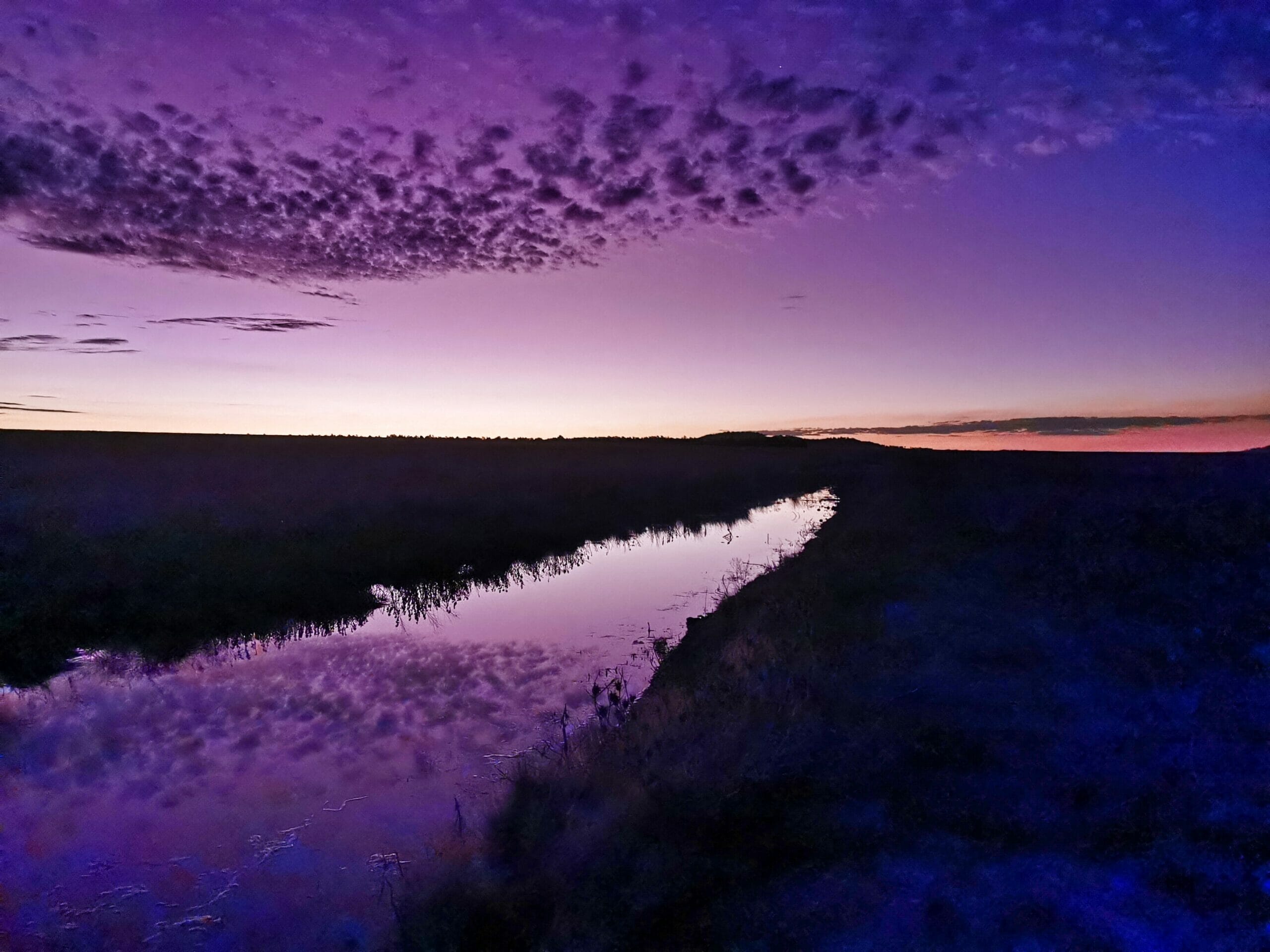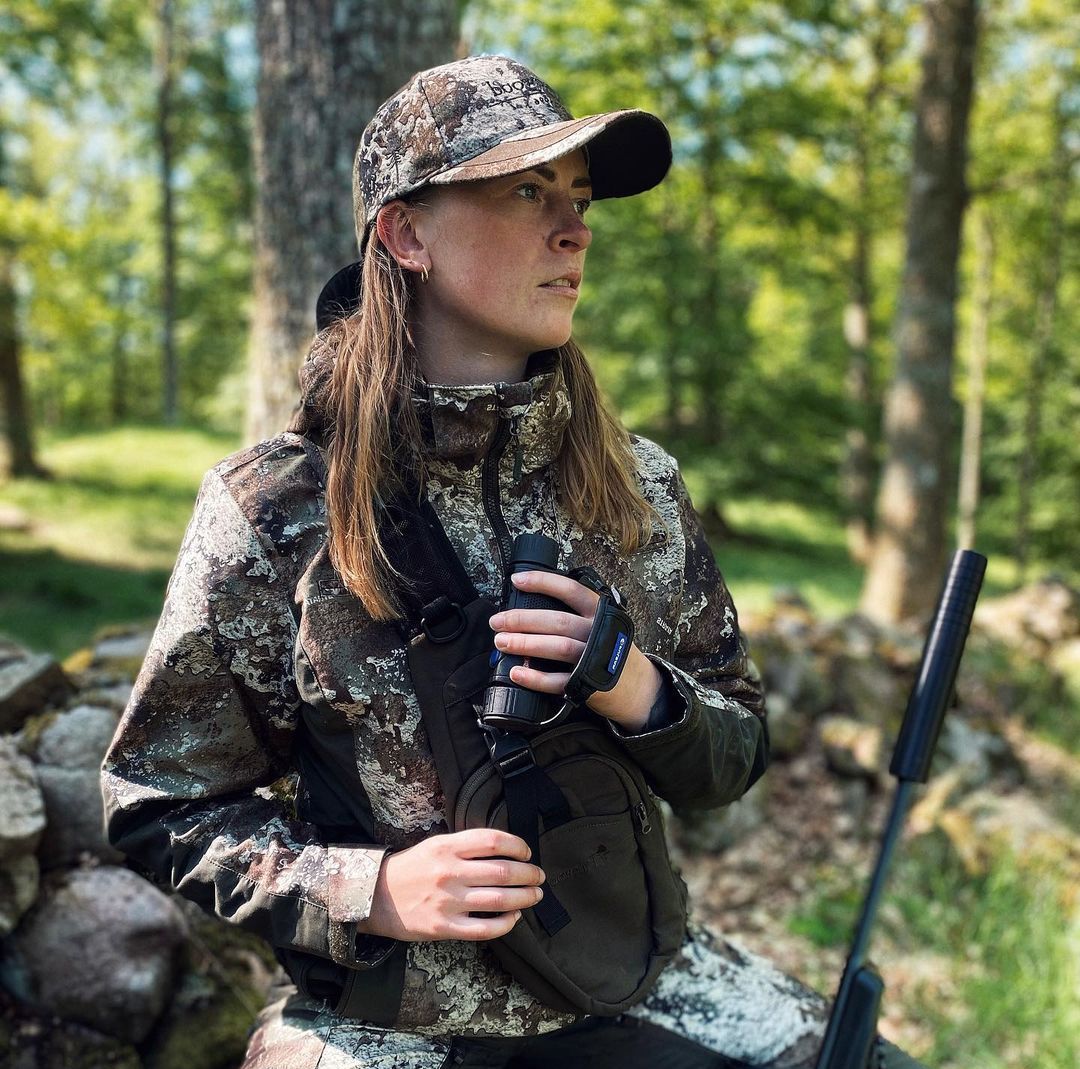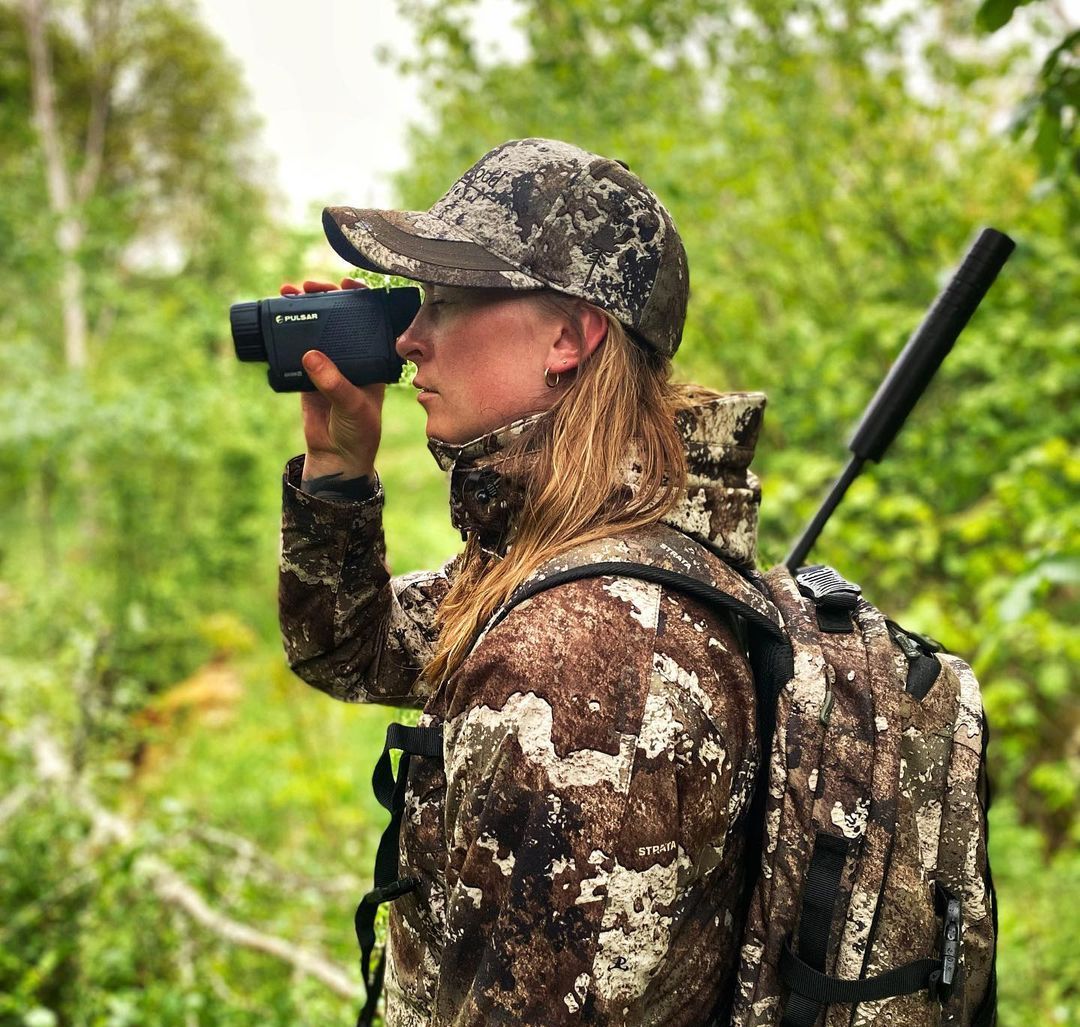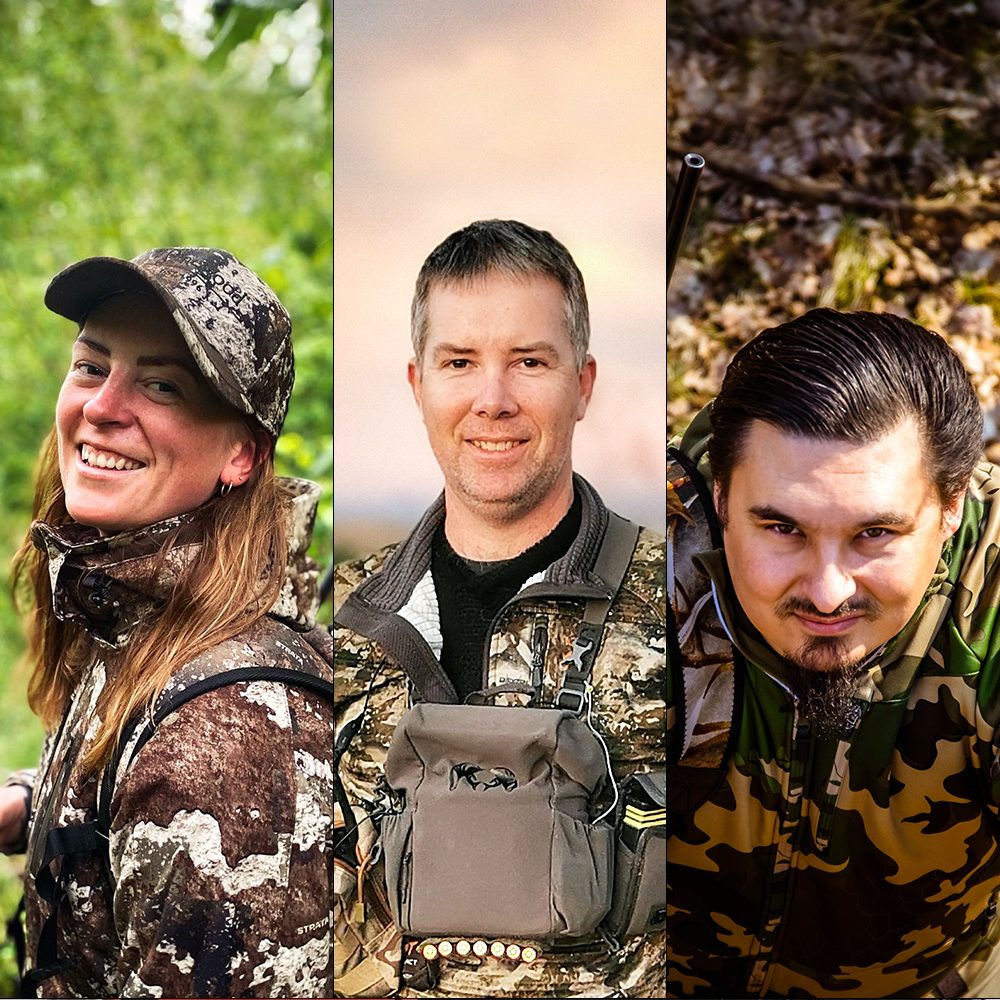
Ann Pedersen, Nathan Stuart, Krzysztof Turowski
hunting_ann edgeoftheoutback chasseur_de_migrateursPhotography:
Pulsar Brand Ambassadors
Continuous learning is essential for everyone, with hunters being no exception. And we believe that learning from the experiences of like-minded people is one of the best ways to improve your skills and knowledge. So, having hunters and nature enthusiasts in mind, we asked our brand ambassadors to share their tips for successful hunting. Here is what Ann Pedersen from Denmark, Nathan Stuart from Australia, and Krzysztof Turowski from Poland told us.
Let's start with the preparation: how do you choose the time and place for hunting?
Ann: I choose the place by looking at the wind and where it is coming from during the day. In addition, I look at the time in relation to sunrise and try to plan my hunts keeping in mind that animals come out at intervals of 3 to 4 hours to feed themselves.
Wild boars are a little different as they prefer to come at night during the winter period, but if you are lucky, you’ll also spot them during the day.
Krzysztof: Everything depends on the game we want to hunt. In most cases, for wild boars and foxes, we will choose night. For roe deers and deers, I will choose dusk and dawn. For duck and pheasant – day. Everything depends on the season and game.
On my hunting ground, wild boars are most predictable. We can choose the correct spot based on the observations we did during the day or communication with local farmers. Wild boars do a lot of crop damage, so we may know where we can expect them. Freshly sown corn is their most delicious morsel in spring. When summer comes, they are very interested in wheat or potatoes. Autumn is reserved for corn fields and white beets, and during the winter, you can have them hiding in the forest next to the oaks or on the fields looking for seeds left after harvests.
Nathan: Land access permission dictates a lot of the locations. But locations are species-dependent. If I were hunting feral pigs, we would be looking for open land with grain crops. For foxes, we might target an area with sheep or livestock; for deer, I head straight for the hills and rolling terrain they live mostly in.
Feral pigs specifically can be more active at night and venture out into the open cropping land more boldly. This is where I will be positioned to either intercept as they emerge or spot them with thermal as the terrain is more open.
Before going on a hunt, do you already know what animal you’ll be after?
Krzysztof: I am usually prepared to meet a dedicated game. However, I always have my fox or wild boar call with me. Dusk or dawn can bring something unexpected and very exciting. That’s why even if I hunt for deer, I can expect to meet boars or foxes. Usually, my hunting is planned, and I adjust my gear and way of hunting for specific game.
Nathan: That can be very specific to the location, which vary greatly in a country as large as Australia. Generally, we will target all invasive species regardless of recreational or contract shooting. If we were to want to hunt trophy deer though, they are a targeted species we focus on during the rut (breeding season).
Ann: I always have an animal in mind before I go hunting, and it always remains my first priority. But if something else comes up and there is time for it, it could easily happen that I choose to go after it instead.
Patience and vigilance are the most important things when looking for an animal – they are out there most of the time, but sometimes they are only around for a very short period.
Ann Pedersen
How do you choose the gear?
Ann: I choose my gear based on the type of hunting I am planning – whether it’s sedentary or if I’ll be moving around. I also evaluate the weather.
Krzysztof: Starting from caliber through optics and clothes, everything should be selected based on the game and the time of the year. While stalking, you should be as quiet as possible, so your clothes should not make too much noise. Always take a look at the weather to make sure you will be prepared for worsening weather, rain, or snow. I always have a set of additional clothes in my car, just in case. Guns and optics should match the law and hunted game. I have a basic group that is always with me: flashlight, knife, phone, and thermal monocular. A sharpener and an additional knife are the basis of every outing. The sharpener should be small to fit in the pocket.
Nathan: Rifle and scope selection is always first. For pig hunting, I want a medium caliber like the .308 Win with a good thermal scope and hand scanner. We target feral pigs year-round in Australia, and gear can vary hugely from the hot nights of our summer to sub-zero winter temperatures.
I always have a tripod to shoot off at night as you have the ability when passively hunting with thermal, to take the time to set up for a steady shot. A good rifle sling is also a must as often we walk long distances into a large paddock to get closer to shoot.
How do you choose which Pulsar units to take?
Krzysztof: It is usually based on how I hunt. When I am protecting crops in spring, the small details are not so important; I just need to know if it is a sow or not. It is not ethical to shoot female wild boars with piglets. Usually, we are only focusing on scaring the game, not hunting it. That’s why I am focusing more on small, simple, and compact devices like the Axion XM30F. Later during autumn or winter, I am focusing more on the details, and I am choosing Helion 2 XP50 PRO and Digex C50. I am a fan of the solution of having a night vision rifle scope and thermal vision mono or binoculars. I love my Digex C50.
Ann: This is based on my location – if it’s a field and I need to be able to see long distances, I go for either Helion 2 XP50 PRO or Axion 2 XQ38, and if I am sitting in dense terrain with trees, Axion XM30F will work just fine.
Nathan: For pig shooting, absolutely a device with lower base magnification like my Thermion 2 LRF XP50 PRO. The wider FOV is beneficial when engaging moving targets, often at ranges under 25 meters.
I always have a good hand scanner to save looking around all night through a rifle-mounted scope. My Helion 2 XP50 PRO has been flawless in this role, but I must say the new Merger LRF XP50 thermal binoculars are amazing to use in the field. I’m still comparing the two devices extensively, but the Merger is in front for preference due to the larger screen you can see with both eyes and the LRF.
Krzysztof Turowski
Remember not to be greedy, take care of safety, enjoy what you have seen, do not envy the game of other friends, eat what you've hunted, and always have charged batteries.
Once you’re out in the field or the forest, what are the first things you do?
Nathan: Load magazines in rifles, check thermal batteries are fully charged, and check the wind direction for any planned approaches.
Krzysztof: Once I am in the place, I usually check the wind to make sure what my exact spot should be and how to get there. After that, I try to become as quiet as possible. In my closest hunting ground, I am a typical stalker. We have a lot of crop fields with corn, rapeseed, wheat, or rye. I am usually walking to find the game. I also have a second place, which is 90% forest. Hunting there is almost always from a hunting stand a few meters above the ground. At first, I usually install my C-Clamp mount with a thermal, pour myself a coffee from a thermos, and jump into a sleeping bag. I can easily spend 6-8 hours there, even during the winter.
Ann: I look through the terrain, and then I get ready. The process can be a bit noisy as you’re going through all your things. And never forget snacks and drinks!
What are the most important tips for finding an animal?
Krzysztof: Be vigilant and look at the ground. Remember that small details matter. Look for permanent places where the game passes, and look for damage to crops. Try to use all of your instincts to watch, hear and even smell the game. Big boar packs will leave their smell even for a few hours. Contact local farmers, and use devices that help you locate the game. Be patient and calm.
Ann: Patience and vigilance – the animals are out there most of the time, but sometimes they are only around for a very short period.
Nathan: Understanding their habits, food sources, and travel routes.
Once you’ve spotted an animal, how do you decide if you should go for it?
Ann: First of all, I look at the condition of the animal. If it looks sick and emaciated, it should be shot away. If it looks fit and healthy, I consider if it is a trophy animal and if it should have a few more years.
Krzysztof: It all depends on the season. If it’s spring, I usually select the smallest wild boars to protect big sows which can be pregnant. For bucks and red deer, we have specific criteria which allow us to shoot only specific males with specific antlers of a certain age. A Polish hunter has to pass a special additional exam to be able to determine the age of a roe goat or deer effectively. We are only allowed to use day optics for this, and hunting is only possible for an hour before sunrise to an hour after sunset.
Each male deer, red deer, or fallow deer is then judged by a qualified commission that checks that the game is not too young. Such assessment takes place on the teeth of the game. If the wrong specimen is hunted, the hunter may be suspended from hunting male deer.
When hunting pheasants, we are also allowed to hunt only males, i.e., roosters, and the hunter has literally a few seconds to make sure that he can pull the trigger. Contrary to what the opponents of hunting say about us, hunting is largely letting go of live games rather than shooting them.
Nathan: Feral pigs are all invasive animals in Australia, and we show little discretion, large or small. Although the bigger animals are easier to shoot.
If it’s deer trophy hunting, that’s based on antler quality during the rut. Or it can just be focused on gathering meat for my family in which case a younger animal will be targeted.
When I am focusing more on the details, I choose Helion 2 XP50 PRO and Digex C50. I am a fan of the solution of having a night vision rifle scope and thermal vision mono or binoculars.
Krzysztof Turowski
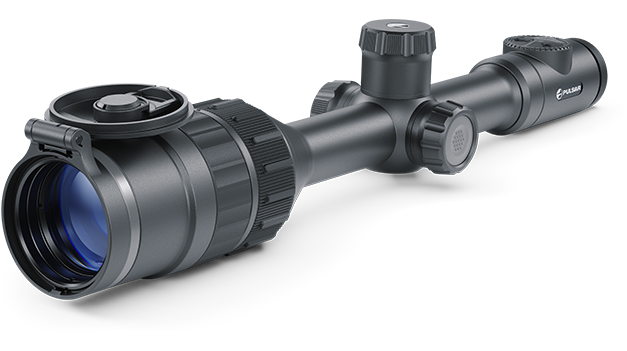
Once you get your animal, how do you decide if you want to stay for more or go home?
Krzysztof: Usually, it is only one game that I hunt during a single hunt. Hunting is a passion, and it should never change into greed. A good hunter is not necessarily the one that shoots a lot of game. I always eat what I hunt, so I am hunting for a specific need to get tasty and healthy food.
The trophy is only something extra, it does not have to be obtained, and the most important thing is how we remember our hunting. Each outing is an adventure that does not necessarily end with a shot. When hunting ducks, pigeons, or pheasants, we usually try to hunt more than one head to be able to provide ourselves with a rich broth, but in the case of a large game, it is usually one piece. The process of gutting, bringing, shrinking, and dividing the meat itself takes a long time and fills the freezer for days.
Nathan: That depends on the location. Sometimes we sit in one spot and wait all night for different pigs to cycle past if they have a reason, like a food source to do so. In other large areas, we are mobile in a vehicle checking many different locations.
If deer hunting, I have normally traveled a few hours to the location. I will stay on the hunting trip and either observe more animals and enjoy the outdoors or switch to pest control shooting of all invasive species.
Ann: Never shoot more than you can eat, sell or give away to your friends!
What are some other general tips you would give for a successful hunt?
Ann: Be patient and sit still. If you’re hunting at night, put the phone away as wild boars see and hear everything.
Look at the ground you wouldn’t normally always look at, get the 360-view once every 5-10 minutes, and sit still after that.
Snacks and something to drink are important for concentration and warmth and remember the right clothing if it’s cold. Here, it is always important to have several extra layers so that you can vary how much you wear all the time.
Nathan: Always pay attention to the wind at night. If using a thermal and you are being quiet, the wind is one thing that will wreck a hunting opportunity if the animal smells you. I also use a small red LED headlamp when moving around – I find most animals are not bothered or aware of the red light until you get within 25 meters. This allows me to safely walk around in the dark and not stumble into ditches, fences, etc.
Krzysztof: Be vigilant, curious about nature, and open to knowledge from other hunters, books, or movies. Spend as much time as possible in the fishery and shooting range. Record your shots, and play them back later so that you can be a conscious hunter who knows their abilities, equipment, and fishery. Remember not to be greedy, and take care of safety, which is of superior value to any hunting. Enjoy what you have seen, even if you fail to hunt anything, and do not envy the game of other friends. Eat what you’ve hunted; too much food is wasted in garbage cans, and of course, always have charged batteries.
Nathan Stuart
My Helion 2 XP50 PRO has been flawless in this role, but I must say the new Merger LRF XP50 thermal binoculars are amazing to use in the field. I'm still comparing the two devices extensively.
Before purchasing any night or thermal vision device, please make sure you adhere to the local legislation and only use it when it is allowed. Our ambassadors come from various countries and travel a lot, which allows them to test different devices. We do not encourage or support the illegal use of our devices in any events. If you wish to learn more about export and sales restriction policy, please visit the following link: Export and Sales Restriction Policy.
